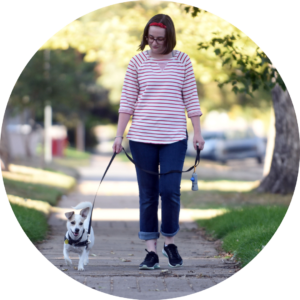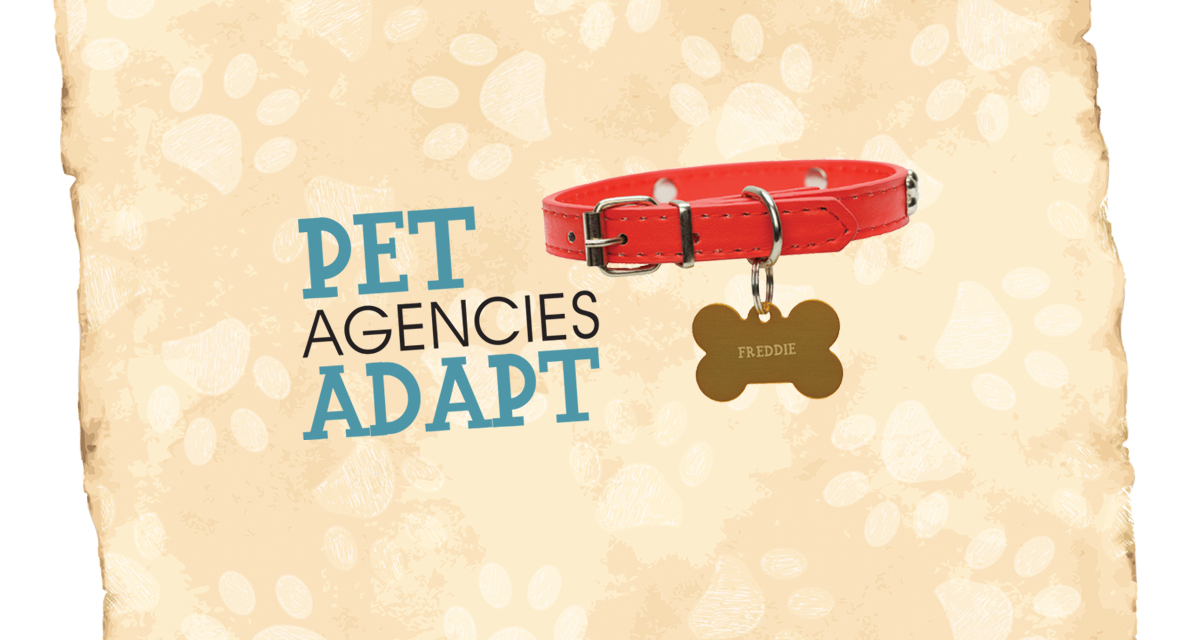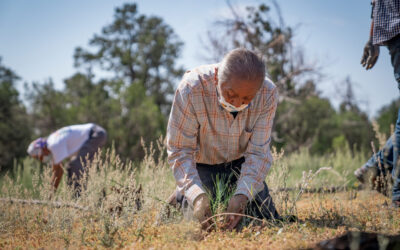By Dan England | Photos by Josh Polson
SHELTERS NOW OFFER MATCH-MAKING AND A HELPING PAW TO FRUSTRATED ADOPTERS

Hannah Fields always wanted a Jack Russell terrier. Freddie, with his cute puppy face and cute puppy play, seemed like a dream with fur. And then he began to chew her socks with his cute puppy teeth.
She had good memories of a terrier she had as a kid, Max, whose only bad habit was peeing on grocery bags. He was a good boy. Freddie was loving and fun, and definitely not a good boy.
By the time she cried for help from the Humane Society of Weld County, where she’d adopted him and volunteered as well, all her socks had holes in them, her carpet had craters and her fingers and toes were full of teeth marks. Trainers told her to teach him to sit, which sort of helped, and watch him constantly, which really didn’t because, well, she had a job.
Even five years ago, Fields, 25, may have returned Freddie and lived with her cats and a bruised heart. But Northern Colorado shelters in that time have done everything they can to prevent unhappy returns. They’ve hired behaviorists and trainers and, most of all, developed adopters and their new pets.
“Starting five years ago, there’s been a big shift in animal welfare and sheltering as a whole,” says Sarah Waller Morrill, director of marketing and development for Weld County’s humane society. “The concept in the past was once you get a dog in the shelter…however you can get it out, you get it out. Now we look at every animal like an individual and try to place every animal in an ideal home. And we’ve always offered post-adoption counseling, but now that’s been updated and expanded.”
Weld County’s humane society behaviorists figured out, together with Fields, that Freddie was probably six months to a year-and-a-half old. The behaviorists called this the “mush brain” stage (they also used more colorful descriptors) of a dog’s life. Dogs grow so much in that stage that their brain development shuts down: This may also explain human toddlers or teenagers. That helped reassure Fields that she wasn’t doing anything wrong.
Then they told her to yelp, loud, when Freddie nipped her, the theory being that he didn’t know he was hurting her and that would let him know. She also took him for a time out in the bathroom with every bite. That worked right away. Freddie hated being alone and seemed to feel bad that the play biting hurt.
Finally, they told her to walk him, take him to a dog park and schedule chew toys, by the hour, and give him time alone in the kitchen with a baby gate. She can’t believe how much better he is now. He was always sweet and great with people. Now he’s relatively well behaved: He’s still a puppy and an active breed, but Fields was ready for that. She always wanted a terrier. Now she wants to keep one.
“He was a real nut,” she says. “But he’s a slightly more well-behaved nut now.”
Making a match
Adoption agencies, such as those rescues who specialize in a breed, have always had more luxuries when it came to finding their animals a good home. But now even shelters don’t just try to get as many as they can out the door. This is even more amazing when you consider nearly all shelters in Northern Colorado are essentially “no kill” shelters, meaning they won’t euthanize just to clear space.
This means that agencies won’t hand a pet over to the first person who applies to adopt it. Instead, these days, they like to play matchmaker.
“A focus of the team is to have conversations with adopters to make sure they are a match with the animal they are interested in and vice versa,” says Justin Clapp, marketing and community outreach program manager with Larimer Humane Society.

This practice is now common in shelters, as it’s in their best interest to screen clients and ensure they understand the commitment behind adopting a pet. More recently, they know enough to put restrictions on a dog, such as families with small children, cats or other dogs, or to dog owners who, for instance, don’t understand that huskies are awesome and beautiful and crazy.
But now, as Clapp mentioned, they can match a home with one that’s suitable for that specific dog, regardless of breed or preconceived notions (not all huskies, for instance, are crazy). This could go as far as sending a herding dog home with a runner who enjoys taking a dog running for five miles a day.
“Our client services team meets with any potential adopter prior to ever setting up a visit with a given animal to ensure they meet the criteria for that animal,” Clapp says. “If they do, they will then be set up on a visit and given an opportunity to discuss any further questions with our team if they’d like.”
It’s not unusual, then, for adoption places now to sift through applications and reject them even before any kind of visit with a dog.
“I can filter them out right away, 50 percent or more that I know are not a good fit for this dog,” says Linda Lea, a volunteer leader with Big Bones Canine Rescue of Windsor, which has a behaviorist assess each dog through walks, play and observation. “But they may be a good fit for another dog.”
Getting to know you
These days, shelter staff is there to do more than clean cages. Even if they aren’t specifically behaviorists, there’s an expectation for them to know all the animals’ personalities. When someone comes in, they should know, right away, who is a good fit and who isn’t.
“You can point to an animal, and the staff will know the name, the background and their temperament,” Waller Morrill says. “We have one staff member who can name all 200 animals we have at a time. That’s just the dedication level we see here.”
There are also other ways of squelching trouble: Adopters fill out forms that ask questions such as “Why would you return a pet?” Staff will also introduce multiple dogs to adopters who don’t know what they want, and other times adopters will bring their other dogs to help the staff figure out what’s already working for the owner. This, in turn, gives the staff the power to say no to adopters if they don’t think it’s a good fit.
“We want to empower our staff,” Waller Morrill says.
However, even those that seem like good matches can be off in some way—setting up mutual friends on blind dates doesn’t always inspire relationships either—and that’s why agencies and shelters like to have adopters spend time with their dogs and cats before they sign the papers. Only now the staff and the adopter checks to see if it’s a good fit. If staff read the dogs well, they will turn adopters down.
“We like to have multiple people apply,” Lea says. “I’ve had dogs who literally say, ‘No, this is not my family.’ I’ve had families storm out on me. They tell me, ‘I got my application in first,’ but that doesn’t matter. It’s best, not first.”
Cat and canine confidence
Sometimes pets are returned regardless of what a shelter does to prevent it.
“Sometimes people were just not prepared to have an animal,” says Sarah Jenkner, adoption program manager with Animal Friends Alliance, a union that formed a year-and-a-half ago between Fort Collins Cat Rescue and Spay/Neuter Clinic and Animal House Rescue and Grooming.

Those reasons include allergies, people losing their home, fighting with other pets or, especially this year, death of the owners.
“Some of our cats and dogs come back to us after 10 years because their owner has passed away,” Jenkner says.
Indeed, many shelters and agencies have seen upticks in returns and surrenders because their owners died of COVID-19.
“We literally took in dogs whose owners died from COVID-19 and no one else can take them,” says Lea with Big Bones.
Even so, return rates are still single digits in most Northern Colorado shelters. They can creep as high as 20 percent or higher, especially in states with high “kill” rates. Usually, 10 percent of owners will call an agency or shelter for help after they adopt.
New pet owners, especially those without much experience, may be timid, and pets, especially dogs, pick up on that. Building that confidence is important to a successful relationship, and sometimes the process helps to do that.
“Our team has always sought to support adopters by providing education and resources even after adoption,” says Jordan Dunn, director of community engagement with Animal Friends Alliance. “A big part…before adoptions are completed is answering questions and clarifying expectations around bringing home a new pet.
“I even think that first step helps people to feel more confident if there are initial hiccups. Every adopter is contacted post-adoption to see how it’s going and encouraged to contact us if questions or issues arise, whether that’s next week or in 10 years.”
Animal Friends Alliance, in fact, hopes to invest a pile of bones into education, support and matching the right owner with the right pet. The organization hopes to build that with its planned new shelter building at the Taft Hill Road campus.
“Our plan is to use the community room for outreach and general educational events, but as I hope we continue to grow, we will be able to offer more specialized education events and behavior resources, including classes where people can bring their own pets and learn training tips. We’re always looking to our community to learn where there is a need and how we can help fill it.”
NO PUPPIES FOR CHRISTMAS

If you’re looking for a puppy to give to your kids for Christmas, you may not be able to find one at the Humane Society of Weld County.
They purposely withhold certain kinds of pets,depending on the holiday, to cut down on the spontaneous purchases that occur more often this time of the year.
That means no black cats in October and no puppies for Christmas. “We wait a bit,” says Sarah Waller Morrill, director of Weld County’s marketing and development for the humane society. “We just want to reduce the gift giving as much as possible.”
The Larimer Humane Society also discourages giving animals for Christmas, says Justin Clapp, spokesman for the society.
“The animals may seem like great gift ideas because of their cuteness factor, [but] these pets come with a time and family commitment that we believe can’t be pushed upon someone as a surprise,” he says. “Someone receiving the pet as a Christmas gift may not be ready to take that commitment on.”
“They expire in a year,” he says, “so it gives the adopter time to make a decision.”Animal Friends Alliance doesn’t discourage adopting animals around the holidays, but they also require that the primary caretaker of any animal is involved in the decision, as well as other family members who understand that the responsibility to care for the adopted cat or dog will fall to them if circumstances change.“We have always encouraged people to consider adoption as a family/household decision,” says Jordan Dunn, director of community engagement with the alliance, “rather than a ‘gift.’”






